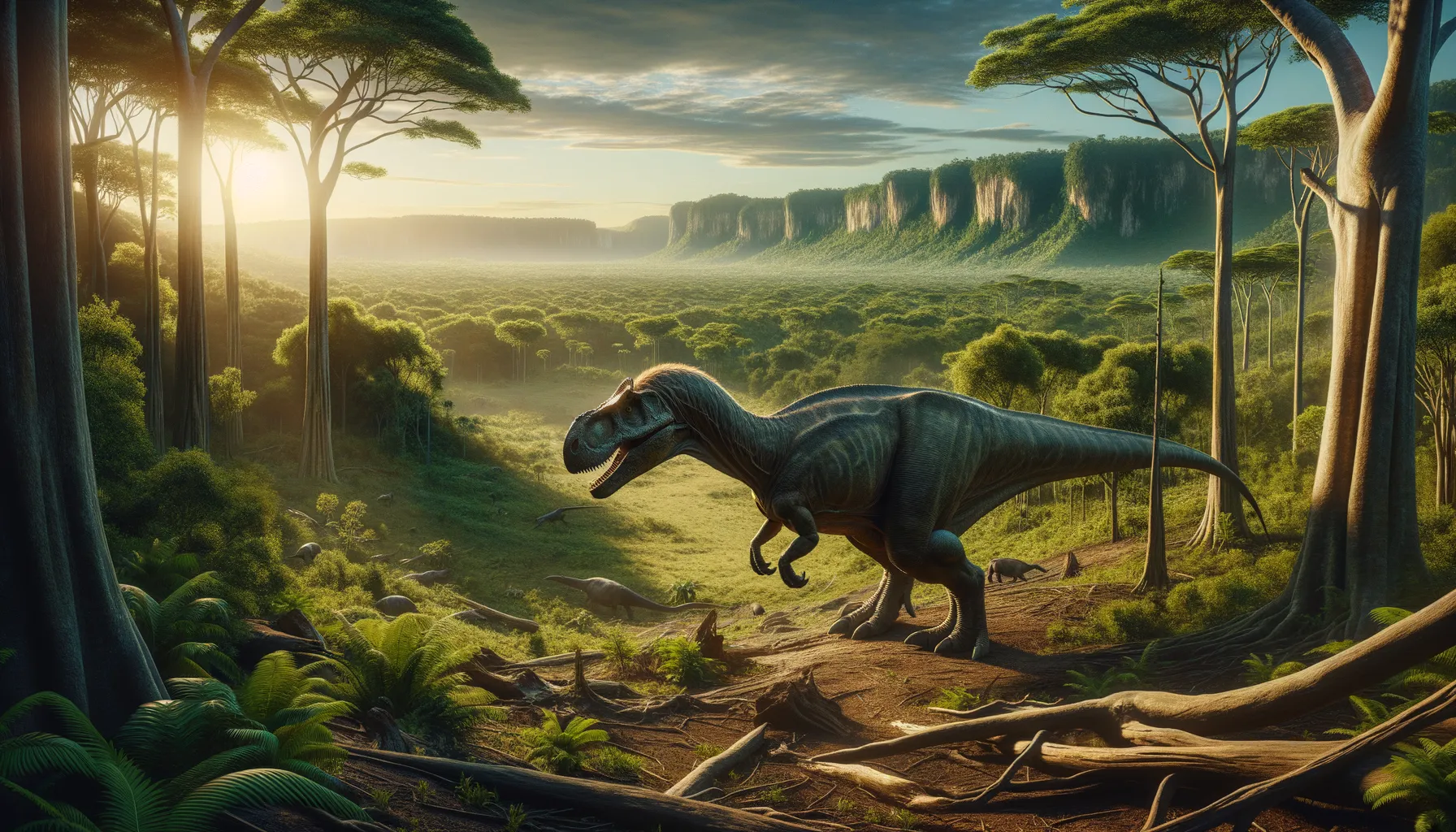
Brasileosaurus
Explore the enigmatic Brazilian giant!
Period
Cretaceous
Length
Measured approximately 8 meters in length.
Height
Stood about 3 meters tall.
Weight
Weighed around 2,000 kilograms.
Brasileosaurus was a formidable dinosaur from the Cretaceous period, notable for its robust size and distinctive physical features. It thrived in what is now modern-day Brazil, navigating dense forests and open landscapes. Its slow movement and herbivorous diet defined its ecological role. Eventful discoveries in Brazil have helped paleontologists piece together this fascinating dinosaur's life, informing us about its interactions and behaviors within its prehistoric world.
Diet
Brasileosaurus was primarily herbivorous, feeding on a variety of vegetation. Its diet likely included ferns, cycads, and other large plants available in its habitat.
Hunting
As an herbivore, Brasileosaurus did not hunt other animals. Instead, it foraged for plant material, using its strong jaws to clip and consume tough foliage.
Environmental challenges
Brasileosaurus faced numerous environmental challenges, such as fluctuating climate conditions which affected plant growth. Predation was another challenge, requiring it to be vigilant of larger carnivorous dinosaurs. Competition for food with other herbivorous species in its region may have also been a constant issue.
Speed
Brasileosaurus was relatively slow-moving.
Lifespan
Lived for up to 30 years in the wild.
First discovery
Discovered in Brazil in the late 20th century.
Fun Facts
- Brasileosaurus is a lesser-known dinosaur that lived during the Jurassic period.
- This dinosaur's name means 'Brazilian lizard,' even though it wasn't found in modern-day Brazil.
- Brasileosaurus was likely a herbivore, munching on plants much like a serene prehistoric cow.
- It is believed to have shared its habitat with an array of other fascinating prehistoric creatures.
- Despite its name, no complete skeleton of Brasileosaurus has been discovered yet.
- Brasileosaurus's discovery has sparked curiosity and debate among paleontologists about its true classification.
- This dinosaur adds a touch of mystery to the rich tapestry of ancient life.
Growth and Development
Brasileosaurus underwent rapid growth within its first few years, requiring abundant food supply. It reached full maturity after about a decade. Its development involved growing a strong skeletal structure to support its massive body.
Habitat
Brasileosaurus inhabited lush, tropical regions with plentiful vegetation. It thrived in areas with both open fields and dense forests, which allowed access to diverse plant life. Water sources nearby were essential for its sustenance.
Interaction with other species
Brasileosaurus coexisted with various other herbivores, often sharing feeding grounds. While generally passive, it had to be cautious of territorial disputes with others. Larger carnivorous dinosaurs posed a threat, thus interaction often involved strategic avoidance.
Natural lifespan
Its natural lifespan reached about 30 years.
Reproduction
Brasileosaurus likely reproduced by laying eggs in nests on the ground. Female dinosaurs would have exhibited nurturing behavior, protecting their eggs from predators. Hatchlings, once emerged, grew under the watchful eye of their parents for an initial period.
Social behaviour
Brasileosaurus likely lived in herds, providing protection from predators through numbers. Social structures within these herds may have involved communication for coordinating movements and feeding activities. Solitary behavior was less common and might have been due to illness or injury.
Fossil locations
Fossil remains of Brasileosaurus have been predominantly found in Brazil, granting its name and underscoring its geographical range. Specific sites in the Brazilian landscape have yielded significant skeletal parts, enriching our understanding of its existence.
